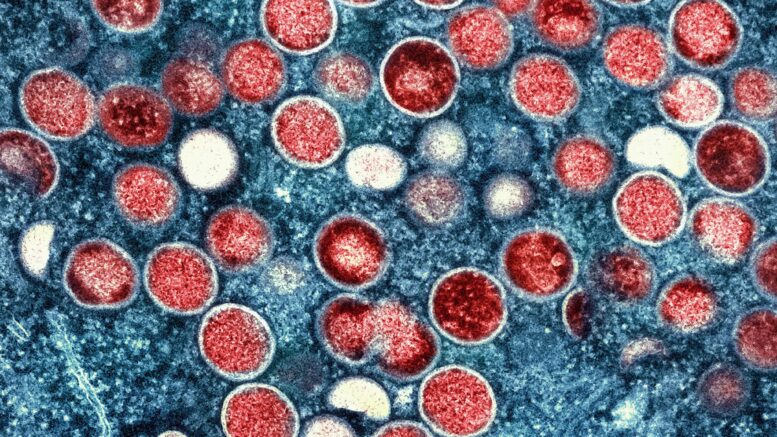In the latest edition of MMWR, Pfeiffer, et al. (2022) report that in May, the Salt Lake County Health Department reported two real-time polymerase chain reaction (PCR)–confirmed travel-associated cases of monkeypox to the Utah Department of Health and Human Services (UDHHS). The two persons with monkeypox (patients A and B) lived together without other housemates. Both persons experienced prodromal symptoms (e.g., fatigue and body aches). Eight days after symptom onset, patient A experienced penile lesions; lesions spread to the lips, hands, legs, chest, and scalp by day 10. Patient B experienced prodromal symptoms 8 days after illness onset of patient A; patient B experienced a lesion on the foot which spread to the leg and finger by day 11.
To assess the presence and degree of surface contamination of household objects contacted by monkeypox patients, UDHHS swabbed objects in the home of the patients. The patients identified high-contact objects and surfaces for sampling; the patients also described cleaning and disinfection activities performed within the home during their illness and locations within the home where they spent substantial amounts of time while ill. The patients had isolated at home for 20 days before their home was entered for sampling. The patients were still symptomatic at the time UDHHS collected specimens from their home. The temperature in the two-story home ranged from 69°F (20.6°C) to 75°F (23.9°C) during their period of isolation. CDC monkeypox-specific cleaning and decontamination guidance was shared with the occupants at the time the home surfaces were swabbed.
UDHHS personnel entered the residence discreetly wearing recommended personal protective equipment. They performed targeted environmental sampling using published methods. Specimens were obtained from 30 objects in nine areas of the home and were transported to the Utah Public Health Laboratory for shipment to CDC where they were processed and tested with both nonvariola Orthopoxvirus and West African Monkeypox virus–specific real-time PCR assays. Viral culture was only pursued if the qualitative PCR result was positive. This activity was reviewed by CDC and was conducted consistent with applicable federal law and CDC policy.
Among the 30 specimens, 21 (70%) yielded positive real-time PCR results, including those from all three porous items (i.e., cloth furniture and blankets), 17 of 25 (68%) nonporous surfaces (e.g., handles and switches), and one of two mixed surface types (i.e., chair). No specimen yielded a positive viral culture result. During the period of isolation both residents of the home reported showering once or twice each day, performing hand hygiene approximately 10 times daily, laundering bedding and clothing weekly, and performing routine household cleaning (e.g., mopping and daily use of a multi-surface spray on most high-contact surfaces). The cleaning spray used was not listed on the Environmental Protection Agency’s List of Disinfectants for Emerging Viral Pathogens.
As the researchers note, "Monkeypox virus DNA was detected from many objects and surfaces sampled indicating that some level of contamination occurred in the household environment. However, the inability to detect viable virus suggests that virus viability might have decayed over time or through chemical or environmental inactivation. Although both patients were symptomatic and isolated in their home for more than three weeks, their cleaning and disinfection practices during this period might have limited the level of contamination within the household. These data are limited, and additional studies are needed to assess the presence and degree of surface contamination and investigate the potential for indirect transmission of Monkeypox virus in household environments."
The researchers continue, "Monkeypox virus primarily spreads through close, personal, often skin-to-skin contact with the rash, scabs, lesions, body fluids, or respiratory secretions of a person with monkeypox; transmission via contaminated objects or surfaces (i.e., fomites) is also possible. Persons living in or visiting the home of someone with monkeypox should follow appropriate precautions against indirect exposure and transmission by wearing a well-fitting mask, avoiding touching possibly contaminated surfaces, maintaining appropriate hand hygiene, avoiding sharing eating utensils, clothing, bedding, or towels, and following home disinfection recommendations."
Reference: Pfeiffer JA, et al. High-Contact Object and Surface Contamination in a Household of Persons with Monkeypox Virus Infection — Utah, June 2022. MMWR. Aug. 19, 2022
Source: CDC
